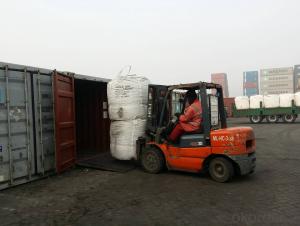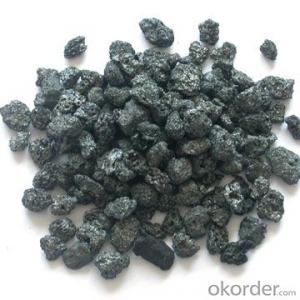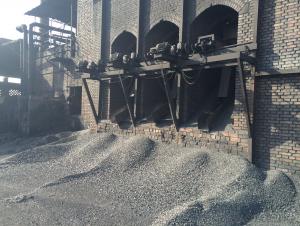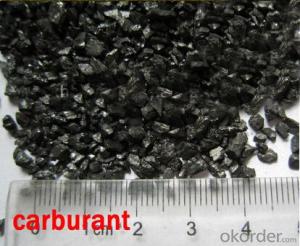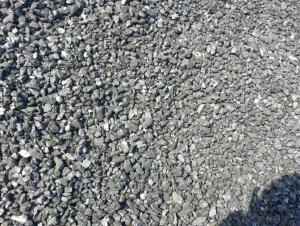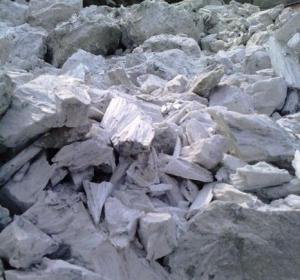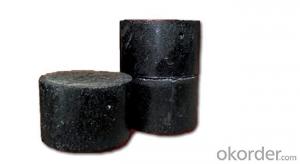FC90% Calcined Anthracite Coal in high quality
- Loading Port:
- Tianjin
- Payment Terms:
- TT OR LC
- Min Order Qty:
- 20.2
- Supply Capability:
- 9550 m.t./month
OKorder Service Pledge
OKorder Financial Service
You Might Also Like
Introduction
Calcined Petroleum Coke comes from delayed coke which extracted from oil refinery. Although Calcined Petroleum Coke contains a little bit higher level of sulfur and nitrogen than pitch coke, the price advantage still makes it widely used during steel-making and founding as a kind of carbon additive/carburant.
Features
Carbon Additive also called Calcined anthracite Coal, Gas Calcined Anthracite Coal, Carbon Raiser, Recarburizer, injection coke, charging coke and etc.
It is playing more and more important role in the industry.The main raw material of our Carbon Additive is Ningxia unique high quality Taixi anthracite, with characteristic of low ash and low sulfur. Carbon additive has two main usage, fuel and additive. When being used as the carbon additive of steel-smelting, and casting, the fixed carbon may achieve above 95%. Carbon additive is becoming more and more crucia in the steel and foundry industry.
Best quality Taixi anthracite as raw materials through high temperature calcined at 1200-1250 ℃ for 24 hours by the DC electric calciner with results in eliminating the moisture and volatile matter from Anthracite efficiently, improving the density and the electric conductivity and strengthening the mechanical strength and anti-oxidation, It has good characteristics with low ash, low resistivity, low carbon and high density. It is the best material for high quality carbon products, it is used as carbon additive in steel industry or fuel.
Specifications
PARAMETER UNIT GUARANTEE VALUE | |||||
F.C.% | 95MIN | 94MIN | 93MIN | 92MIN | 90MIN |
ASH % | 4MAX | 5MAX | 6MAX | 7MAX | 8MAX |
V.M.% | 1 MAX | 1MAX | 1.5MAX | 1.5MAX | 1.5MAX |
SULFUR % | 0.5MAX | 0.5MAX | 0.5MAX | 0.5MAX | 0.5MAX |
MOISTURE % | 0.5MAX | 0.5MAX | 0.5MAX | 0.5MAX | 0.5MAX |
Pictures
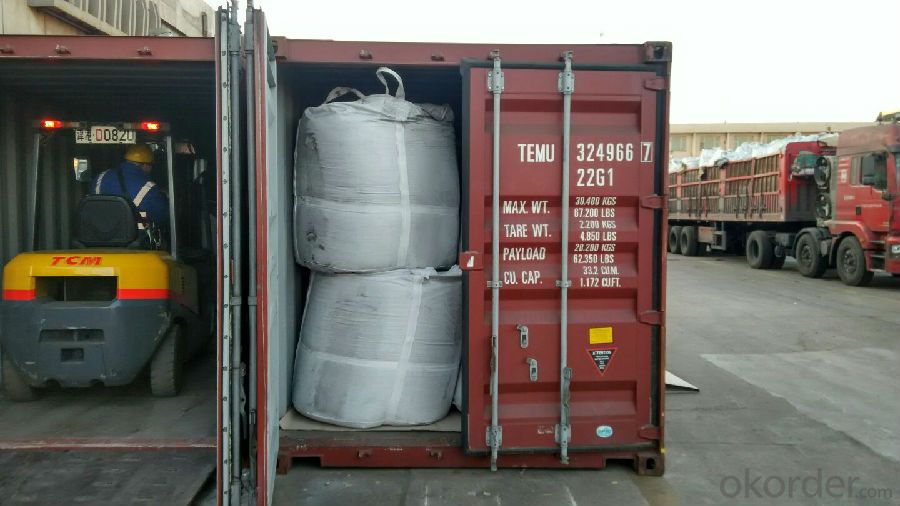
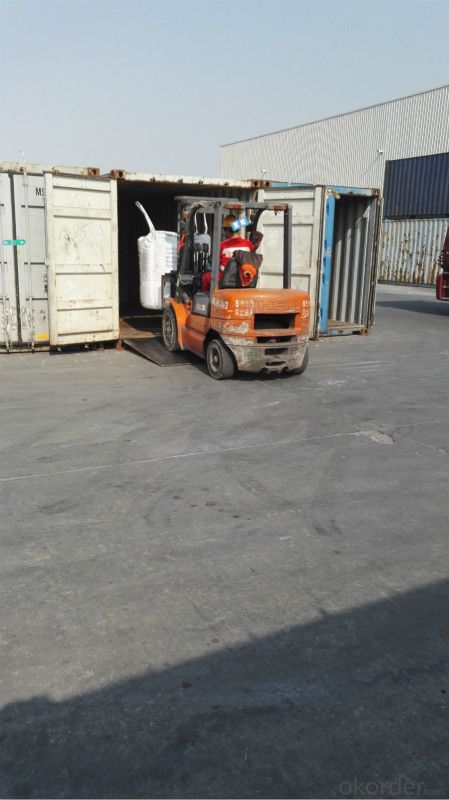

FAQ:
1. What is the packing?
In 25kg bag/ In jumbo bags without pallet/ Two jumbo bags with one pallet/ or as customers’ request
2. What is the production capacity?
10 thousand tons per month
3 What is payment term?
L/C, T/T
4 What is the service?
We will send sample to the third party(CIQ, CCIC, SGS,BV or to be discussed) for checking, and present the test certificate and loading repot of shipment.
- Q:How does carbon contribute to the color of gemstones?
- Carbon is one of the key elements that contribute to the color of gemstones. When carbon is present in the crystal lattice structure of a gemstone, it can absorb certain wavelengths of light and reflect others, resulting in the gemstone's unique color. The arrangement of carbon atoms within the gemstone's structure can cause electrons to be excited, leading to the absorption of specific colors of light. This absorption process is responsible for the gemstone's color as the remaining wavelengths of light are reflected back to our eyes. For example, in diamonds, the presence of nitrogen impurities can cause variations in color, from colorless to yellow or even fancy colors like blue or pink. In other gemstones such as rubies and sapphires, traces of carbon can create a range of colors, from red to blue, depending on the concentration and arrangement of these carbon impurities. Therefore, carbon plays a crucial role in determining the color and visual appeal of various gemstones.
- Q:Why is the solubility of carbon in austenite larger than that in ferrite?
- Ferrite: interstitial solution of carbon formed in alpha Fe.Austenite: interstitial solid solution formed by carbon in gamma Fe.The ferrite structure is a BCC lattice with a gap radius (0.291~0.154). Because of the smaller size of the lattice gap, the solubility of carbon in alpha -Fe is relatively small.
- Q:What are the different forms of carbon?
- Carbon exists in several different forms, known as allotropes. The most common forms of carbon include diamond, graphite, and amorphous carbon. Diamond is the hardest known natural substance and consists of carbon atoms arranged in a crystal lattice structure. It has a high refractive index and is often used in jewelry due to its brilliance and clarity. Graphite, on the other hand, has a layered structure where carbon atoms are arranged in sheets. It is a soft and slippery material, commonly used in pencils and lubricants. Graphite is also a good conductor of electricity, making it suitable for applications in batteries and electrodes. Amorphous carbon refers to a group of carbon materials that lack a well-defined crystal structure. Examples of amorphous carbon include charcoal, soot, and activated carbon. These forms of carbon have diverse applications, such as in water and air purification, as well as in the manufacturing of electrodes and pigments. Other forms of carbon exist as well, such as fullerenes and carbon nanotubes, which have unique properties and are extensively studied for their potential applications in various fields, including nanotechnology and electronics. In summary, carbon can take on different forms depending on its atomic arrangement, resulting in a range of materials with distinct physical and chemical properties. These forms of carbon find applications in various industries and are vital for our everyday lives.
- Q:What is carbon nanoelectrode?
- Carbon-based materials, usually in the form of nanotubes or nanowires, are used to create carbon nanoelectrodes. These electrodes are incredibly small, with diameters on the nanoscale, typically ranging from a few to a few hundred nanometers. The unique properties of carbon nanoelectrodes make them highly desirable for various applications in electrochemistry. Their small size provides a large surface area to volume ratio, resulting in improved sensitivity and electrochemical performance. In addition, carbon nanoelectrodes have excellent electrical conductivity and mechanical strength, making them ideal for miniaturized electronic devices and sensors. They can be easily integrated into platforms like microfluidic systems or biosensors, enabling efficient and accurate detection of chemical or biological substances. Furthermore, carbon nanoelectrodes have demonstrated great potential in energy storage devices, such as supercapacitors and batteries. Their high electrical conductivity and large surface area facilitate rapid charge and discharge rates. Overall, carbon nanoelectrodes are an exciting advancement in the field of nanotechnology. They offer unique properties and unparalleled performance for various applications in electronics, sensing, and energy storage.
- Q:The dangers of grilled BBQ on humansWhat are the dangers of a charcoal barbecue?
- This study shows that burnt meat also has an effect on the human body, although the amount of conversion quantity and the human animal, was about 1/20000, the ratio is very low, but also can avoid the best to avoid as far as possible, especially in old age people.In fact, the biggest problem is not barbecue food, but added to food oil juice, sauce, the oil dripping on the charcoal, heating will produce carcinogenic substances, attached to the barbecue, grilled Dried tofu, grilled corn, fish and so on were eaten roasted in the human body, long-term consumption down, have a higher risk of cancer some. In addition, the flame will make protein to produce chemical changes into highly toxic carcinogenic substances called heterocyclic amines (Heterocyclic amine), often eat these substances, easily lead to the occurrence of cancer.
- Q:Organic matter is converted from organic carbon. Why is humus represented by carbon instead of converted?
- Therefore, only there is a certain relationship between soil carbon content and soil organic matter, high carbon content of soil humus certain, but it does not explain the soil organic matter, because organic matter contains not only the humus, also contains many other organic substances are not decomposed.
- Q:Is the power consumption of carbon fiber heating very high?
- Power consumption calculation:The information you give is not enough to calculate the approximate power consumption!You also need to know your building structure, insulation level, the laying power of electric heating, personal use, setting temperature, local temperature difference between indoor and outdoor, control device is intelligent temperature control and so on!There is also the first heating season, because the building is humid, the electricity consumption will be higher!How to save electric energyIf you want to save electricity, you need it:Give the building a good heat insulation,Use double or three layers of glass,Intelligent temperature controller, and according to the rules of personal life to set, make full use of energy saving, and these are not to reduce somatosensory comfort conditions,The carbon fiber heating cable laying and electric heating, far infrared ray to human body temperature will be higher, also need 18 degrees of comfort, the use of carbon fiber electric heating heating cable only need to set at 16 degrees, so the temperature can be, 2 DEG C, and the temperature difference is small at the only Province 2 C energy, in fact is not the case, as we all know, small temperature difference, the indoor temperature is more easy to maintain!Apply the peak and valley tariff to the local electricity department, so that the electricity price will be around 0.35 yuan at night, and the temperature will be greater at home and in the evening, which will save a lot of money!Do all of this and I'm sure you'll save 20% of your electricity bill!Poly Jiao carbon fiber heating cable electric heating - for you, we are more professional
- Q:What are the consequences of increased carbon emissions on forest ecosystems?
- Increased carbon emissions have a range of negative consequences on forest ecosystems. Firstly, higher levels of carbon dioxide in the atmosphere contribute to global warming, leading to higher temperatures and altered precipitation patterns, which can negatively impact the growth and health of forest plants. Additionally, increased carbon dioxide levels can stimulate the growth of invasive plant species, leading to competition and reduced biodiversity. Moreover, carbon emissions contribute to ocean acidification, which can harm marine ecosystems that are interconnected with forests. Lastly, increased carbon emissions can intensify the frequency and severity of wildfires, posing a significant threat to forest ecosystems and their ability to regenerate.
- Q:What are the properties of carbon-based rubber?
- Carbon-based rubber, known also as carbon black-filled rubber, possesses a range of important properties that make it highly desirable for a variety of applications. To begin with, carbon-based rubber demonstrates excellent elasticity and flexibility, enabling it to endure repeated stretching and compression without permanent deformation. This particular quality renders it ideal for the manufacturing of products like tires, gaskets, and seals. Moreover, carbon-based rubber exhibits exceptional resistance to abrasion and wear, ensuring its longevity even in harsh conditions and with prolonged use. This attribute proves particularly advantageous in applications where the rubber material experiences friction or constant contact with rough surfaces. Additionally, carbon-based rubber showcases remarkable resistance to various environmental factors. It boasts excellent resistance to ozone, sunlight, and weathering, making it suitable for outdoor applications where exposure to UV radiation and extreme temperatures is expected. Its resistance to chemicals and oils further enhances its versatility, enabling its use in industries such as automotive, aerospace, and manufacturing. Another notable property of carbon-based rubber is its electrical conductivity. This characteristic renders it an ideal material for applications that necessitate static dissipation or protection against electrostatic discharge, such as in electronic devices, conveyor belts, and industrial flooring. Furthermore, carbon-based rubber displays good adhesion to various substrates, allowing it to form strong bonds when employed in adhesive applications or as a lining material. Overall, the exceptional elasticity, abrasion resistance, environmental resistance, electrical conductivity, and adhesion capabilities of carbon-based rubber contribute to its status as a highly sought-after material.
- Q:What are the different colors of carbon-based gemstones?
- The different colors of carbon-based gemstones include white, yellow, brown, black, and the rare blue and pink diamonds.
1. Manufacturer Overview |
|
|---|---|
| Location | |
| Year Established | |
| Annual Output Value | |
| Main Markets | |
| Company Certifications | |
2. Manufacturer Certificates |
|
|---|---|
| a) Certification Name | |
| Range | |
| Reference | |
| Validity Period | |
3. Manufacturer Capability |
|
|---|---|
| a)Trade Capacity | |
| Nearest Port | |
| Export Percentage | |
| No.of Employees in Trade Department | |
| Language Spoken: | |
| b)Factory Information | |
| Factory Size: | |
| No. of Production Lines | |
| Contract Manufacturing | |
| Product Price Range | |
Send your message to us
FC90% Calcined Anthracite Coal in high quality
- Loading Port:
- Tianjin
- Payment Terms:
- TT OR LC
- Min Order Qty:
- 20.2
- Supply Capability:
- 9550 m.t./month
OKorder Service Pledge
OKorder Financial Service
Similar products
New products
Hot products
Hot Searches
Related keywords
